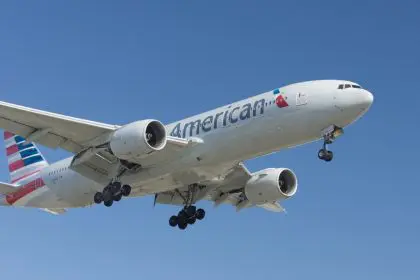United Airlines is making strategic cuts to its route network, permanently eliminating two connections and offering compensation to affected passengers as the carrier focuses on maximizing profitability following strong first-quarter earnings.
The Chicago-based airline announced the cancellations as part of a broader capacity reduction strategy that will remove four percentage points of scheduled domestic capacity beginning in the third quarter of 2025. The move comes despite United reporting its best first-quarter financial performance in five years during April’s earnings announcement.
The eliminated routes represent the end of an era for United’s transportation offerings, marking the airline’s complete withdrawal from a unique service model that supplemented traditional air travel with ground-based connections.
The 2 cancelled routes explained
The terminated services represent United’s final two “landline” routes, a distinctive transportation option that used buses to connect passengers between airports and specific destinations. These ground-based connections served as extensions of the airline’s air network, providing seamless travel experiences for passengers journeying between major travel hubs.
Route 1 provided essential connectivity for passengers traveling between regional airports and major metropolitan areas, utilizing dedicated bus services that operated under United’s branding and scheduling system. The service maintained the same booking procedures and passenger amenities as traditional flights while offering ground-based transportation.
Route 2 similarly connected travelers through bus services that integrated with United’s broader route network, allowing passengers to book combined air and ground itineraries through a single reservation system. These connections often served smaller markets where establishing regular air service would prove economically unfeasible.
Both routes operated as fully integrated components of United’s transportation network, with buses featuring airline-style amenities and maintaining connection schedules that aligned with flight departures and arrivals at major airports.
Passenger compensation and rebooking options
United is implementing comprehensive accommodation policies for travelers affected by these route cancellations. Passengers with existing bookings will receive multiple options for completing their journeys, ensuring minimal disruption to travel plans.
The airline is offering re-routing services that direct passengers to alternative airports within a 300-mile radius of their original destinations. This approach maintains geographic accessibility while utilizing United’s existing air network to serve affected travelers.
Alternative connection options include rescheduling passengers onto traditional flight itineraries that may involve different airports or connection points. United’s rebooking specialists work with affected passengers to identify suitable alternatives that meet their travel timeline requirements.
Partial refunds become available for passengers who cannot utilize United’s alternative arrangements for their specific travel needs. The airline recognizes that some travelers may prefer to seek transportation through other providers rather than accept proposed routing changes.
Strategic capacity adjustments
The route eliminations form part of United’s broader operational strategy to optimize fleet utilization and capacity allocation across its network. The airline plans to make “prudent adjustments to the utilization rate of its fleet” while maintaining service quality on core routes.
Domestic capacity reductions will focus on lower-demand travel days, allowing United to concentrate resources on high-traffic periods when passenger demand and revenue potential reach peak levels. This approach maximizes aircraft efficiency while reducing operational costs during slower travel periods.
The strategy reflects industry-wide trends toward optimizing route networks based on profitability metrics rather than simply maintaining extensive geographic coverage. Airlines increasingly prioritize routes that generate strong revenue per available seat mile over those serving broader accessibility goals.
Fleet utilization improvements involve deploying aircraft on routes and schedules that generate maximum revenue potential while reducing underperforming services that drain resources without providing adequate financial returns.
End of landline service model
United’s decision to eliminate its final landline routes represents the complete abandonment of a service model that once provided unique connectivity options for travelers in underserved markets. The bus-based connections offered solutions for passengers traveling between areas where traditional air service proved economically challenging.
The landline concept emerged as airlines sought innovative approaches to extending their networks beyond traditional airport-to-airport service. By incorporating ground transportation under airline operational standards, carriers could offer seamless travel experiences while serving markets too small for regular air service.
These services required significant coordination between airline operations and ground transportation providers, maintaining schedules that aligned with flight connections while ensuring passenger comfort and reliability standards consistent with air travel expectations.
The elimination of these final landline routes suggests United is prioritizing operational simplicity and focusing resources on core aviation services rather than maintaining diverse transportation offerings that require specialized management and coordination.
Industry implications and future outlook
United’s capacity adjustments reflect broader airline industry trends toward optimizing profitability through strategic route management rather than pursuing market share through extensive network coverage. The approach prioritizes financial performance over geographic accessibility.
The strong first-quarter earnings that preceded these route cancellations demonstrate that airlines can achieve impressive financial results while simultaneously reducing service offerings in specific markets. This balance between profitability and service provision continues shaping airline strategic planning.
Passengers affected by these changes may find alternative transportation options through other carriers or ground-based providers, though the integrated booking and service standards offered by United’s landline routes may prove difficult to replicate through separate transportation arrangements.
The permanent nature of these cancellations suggests United views the landline service model as incompatible with its long-term operational strategy, focusing instead on traditional aviation services that align more closely with the airline’s core competencies and profit optimization goals.


















